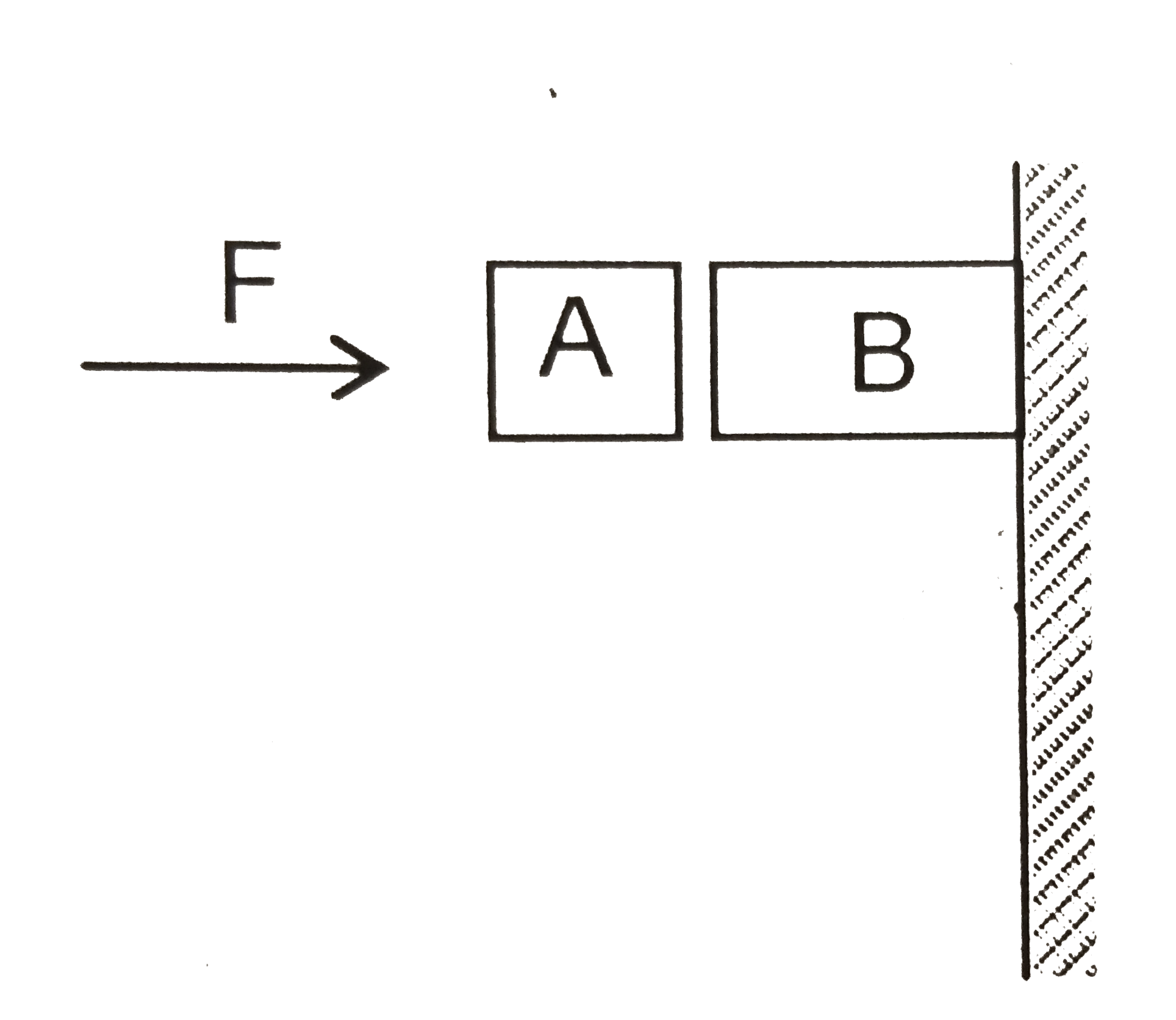Two blocks A and B are pressed against a vertical wall by applying a horizontal force T" as shown in the figure. There is no friction between A and B. Then
a) Both the blocks A and B can be at rest for any magnitude of F
b) B can be at rest A moves down for smaller magnitude of F
c) Both A and B will move down for smaller magnitude
d) A can be at rest and B moves down for larger magnitude of F.
 Solution in Telugu
Solution in Telugu
a and b are correct
c and d are correct
a and d are correct
b and c are correct
The correct Answer is:B
Step by step video, text & image solution for Two blocks A and B are pressed against a vertical wall by applying a horizontal force T" as shown in the figure. There is no friction between A and B. Then a) Both the blocks A and B can be at rest for any magnitude of F b) B can be at rest A moves down for smaller magnitude of F c) Both A and B will move down for smaller magnitude d) A can be at rest and B moves down for larger magnitude of F. by Physics experts to help you in doubts & scoring excellent marks in Class 12 exams.
Updated on:21/07/2023Similar Questions
Given in the figure are two blocks A and B of weight 20 N and 100 N respectively. These are being pressed against a wall by a force F as shown. If the coefficient of friction between the blocks is 0.1 and between block B and the wall is 0.15, the frictional force applied by the wall on block B is

View SolutionGiven in figure are two blocks A and B of weight 20N and 100N, respectively. These are being pressed against a wall by a force F as shown. If the coefficient of friction between the blocks is 0.1 and between block B and the wall is 0.15, the frictional force applied by the wall on block B is:

View SolutionTwo blocks A and B are pressed against a vertical wall by applying a horizontal force 'F' as shown in the figure. There is no friction between A and B. Then
(a) Both the blocks A and B can be at rest for any magnitude of F
(b) B can be at rest A moves down for smaller magnitude of F
(c ) Both A and B will move down for smaller magnitude
(d) A can be at rest and B moves down for larger magnitude of F

View SolutionGiven in figure are two blocks A and B of weight 20N and 100N, respectively. These are being pressed against a wall by a force F as shown. If the coefficient of friction between the blocks is 0.1 and between block B and the wall is 0.15, the frictional force applied by the wall on block B is:
View SolutionA block A of mass 2 kg rests on another block B of mass 8 kg which rests on a horizontal floor. The coefficient of friction between A and B is 0.2 while that between B and floor is 0.5 .When a horizontal floor F of 25 N is applied on the block B the force of friction between A and B is
View SolutionA block A of mass 4 kg is placed on another block B of mass 5 kg and the block rests on a smooth horizontal table. For sliding the block A on B, a horizontal force of 12 N is required to be applied on it. The maximum horizontal force that can be applied on B so that both A and B move together and the acceleration produced by this force is

View SolutionGiven in the figure are two blocks A and B of weight 20 N and 100 N respectively. These are being pressed against a wall by a force F as shown. If the coefficient of friction between the blocks is 0.1 and between block B and the wall is 0.15, the frictional force applied by the wall on block B is

View SolutionGiven in figure are two blocks A and B of weight 20N and 100N, respectively. These are being pressed against a wall by a force F as shown. If the coefficient of friction between the blocks is 0.1 and between block B and the wall is 0.15, the frictional force applied by the wall on block B is:

View Solution
